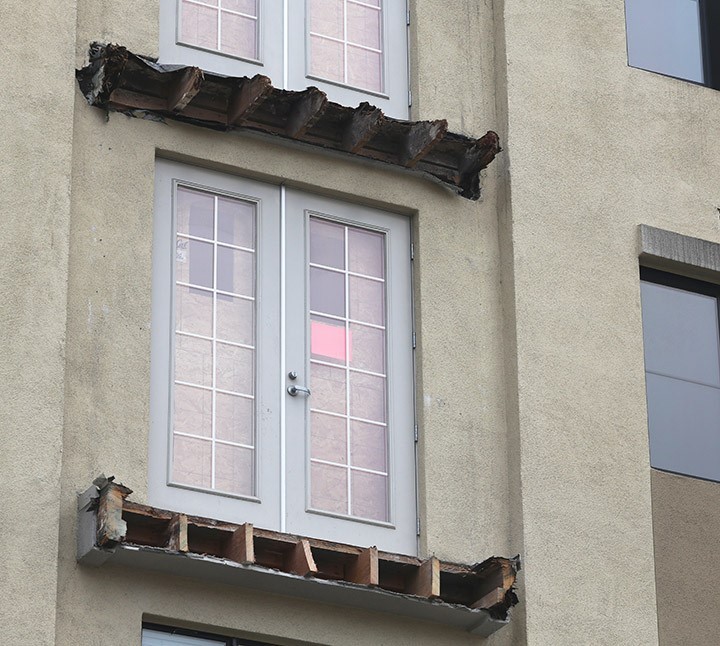For the redundant cantilevers, the end result might have been the same. While there is redundancy, that would only be for as long as the remaining member stay sound. If they were all rotted, then you would get a cascade failure that might happen so quickly that it would be indistinguishable from a sudden catastrophic fail. Moreover, it's likely that the failure was exacerbated by the 13 people on it at the same time. Had there only been, say, 4 people, the balcony might have started to give way slowly, allowing the people to recognize the danger and leave before it collapsed altogether. Certainly, prior to the actual failure, the balcony gave the appearance of being able to support its own weight, which is not inconsiderable, even though the members were already rotted.
While there was some speculation that this balcony shielded the one below, which exhibited, as near as I can tell from photos, almost no rotting, rain water would still have gotten onto the lower balconies. This possibly suggests that the actual construction on that one particular balcony was deficient, which aggravated the less than ideal design. I had that sort of thing happen in my new house; we got some water intrusion, and it turned out that the tar paper had gotten damaged and torn in ONE spot, and water managed to get down to the hole and entered into the wall.
TTFN
faq731-376
Need help writing a question or understanding a reply? forum1529
Of course I can. I can do anything. I can do absolutely anything. I'm an expert!
There is a homework forum hosted by engineering.com:


